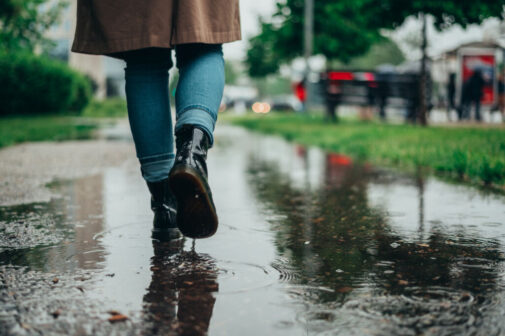9 ways to minimize your spring allergen exposure

Many parents look forward to getting their children outdoors as the longer days of warmer weather begin. But for those with children who have allergies and/or asthma, more time outdoors may mean more allergen exposure, which can lead to respiratory challenges.
Nearly 5 million children under the age of 18 live with asthma, according to the Asthma and Allergy Foundation of America. Allergens are one of the more common triggers of asthma, known as allergic asthma. It is more prevalent in the pediatric population and can taper off in adulthood.
Common triggers, like tree and grass pollen, mold spores and ragweed, can lead to allergy symptoms, including sneezing, itchy throat/nose, nasal congestion and postnasal drip. Your child may also experience an asthma flare-up characterized by wheezing, persistent cough and even breathlessness.
Parents should take these proactive steps to minimize their child’s exposure to springtime triggers:
- Spring cleaning isn’t reserved for indoors. Head outside and tidy up around your living space. This includes removing moldy leaves and foliage left over from the fall, as that can trigger respiratory symptoms.
- For children with allergies, begin allergy medications now as the weather is warming up and your child is becoming more symptomatic.
- Air purifiers can help remove airborne allergens. Stay away from single-room purifiers and obtain a more sizeable, powerful device.
- Close windows and opt to use air conditioning to help keep outdoor allergens from entering your home as much as possible.
- Change clothing after spending a significant amount of time outdoors.
- Regardless of the time of year, parents of children with asthma should make sure rescue inhalers are not expired. If your child starts coughing, use albuterol as a rescue treatment.
- Pay attention to the air quality index in your area. When it is at 100 or higher, limit outdoor time or consider masking.
- The time of day and location your child plays outdoors also play a role in the number of triggers they are exposed to. Mornings and evenings are peak times for pollen levels, so it is advisable to avoid those times of day for outdoor play. Stay out of the grass if it is a trigger.
- Sunglasses, long clothing and hats can also help protect children from both the sun and allergens.
If you suspect your child has allergies, reach out to their pediatrician, who can recommend a specialist. A simple trial of antihistamine for a child older than 2 years of age may be recommended. Do not wait to seek treatment until your child is very symptomatic. Being more aggressive with treatment of symptoms initially may help in the long run. If you believe your child has undiagnosed asthma or if you are struggling to manage their asthma, contact their pediatrician.
Dr. Shimoni Dharia is the division director of pediatric pulmonology at Advocate Children’s Hospital.
Are you trying to find a pediatrician? Find one in Illinois or Wisconsin.
Related Posts
Comments
About the Author
Dr. Shimoni Dharia is the division director of pediatric pulmonology at Advocate Children's Hospital.

















